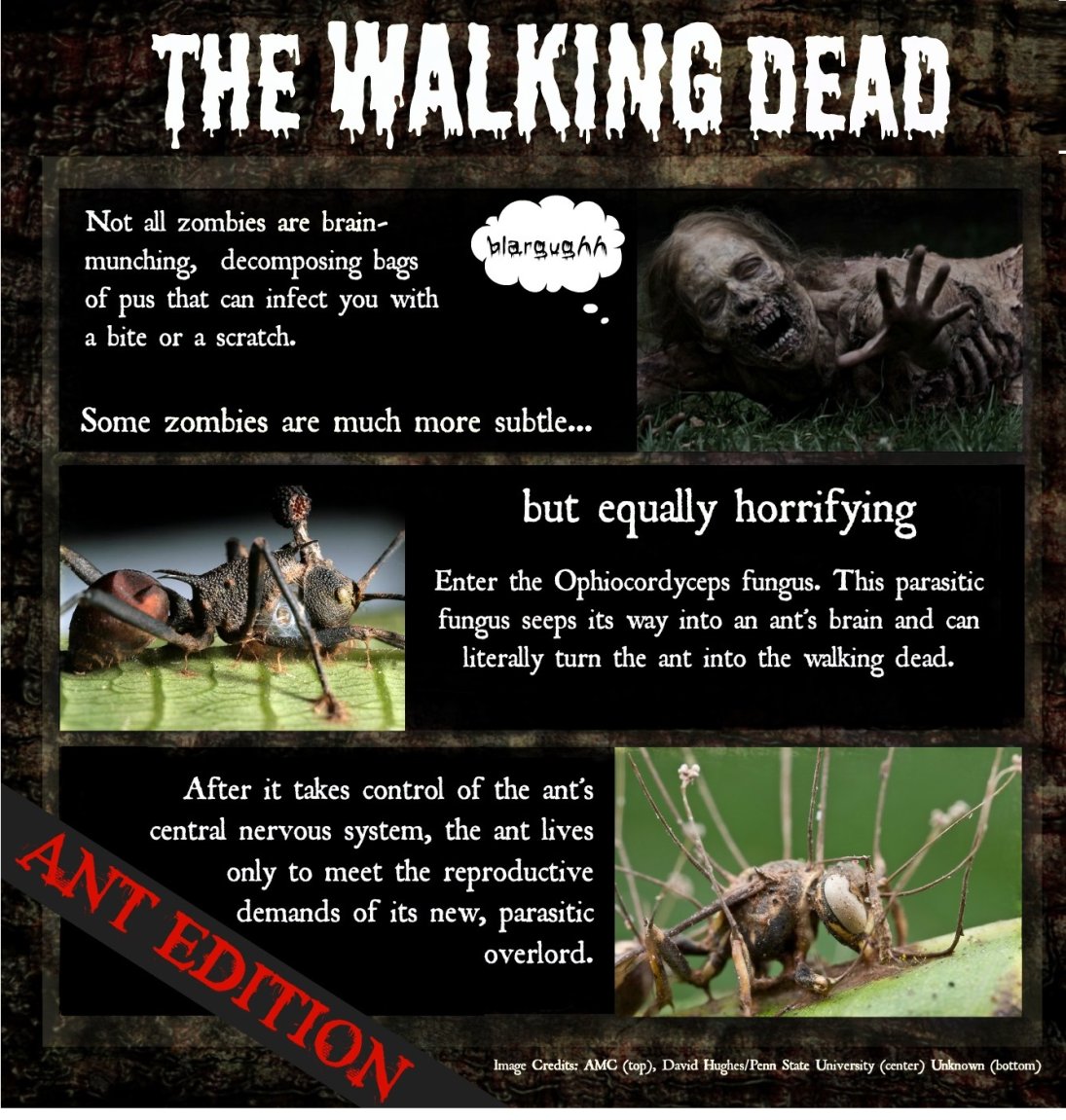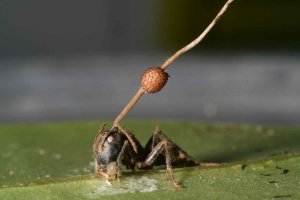
Move over George A. Romero: Zombies have Roamed Earth for 48 Million Years

What’s the most horrific death that you can imagine? Each year, horror moves present us with torture and gore that is meant to shock and terrify us. But for me, the worst death isn’t one filled with screams and a flurry of action. It’s quiet and cold. It’s being led to a dark place to wait, in stillness and solitude, for the inevitable.
It is a long, soft wait—like the wait that ants experience just before they sprout spores from their head and die—that’s exactly what the Ophiocordyceps fungus does to ants.
This parasitic fungus releases spores which travel into the ant’s brain. Here, the spores affect the ant’s nervous system; they take control of the ant and turn it into a vessel for its own reproductive purposes. In this respect, the ant is altered…it is zombified. It transforms from an insect that is part of a larger collective, to a controlled entity with one purpose: not to aid or assist the other ants in the collective, but to help the fungus reproduce and, in the process, kill the rest of the collective.
Maybe the ants don’t eat each other’s brains like typical zombies, but what the zombie ant *does* do is just as horrifying as what you see in many horror films…
After the parasitic fungus takes over the ant’s brain it directs the insect to a cool, moist location (generally, the underside of a leaf). Once the ant reaches such a location, it uses its pincers to bite down on the vegetation. Upon dissection, researchers discovered that, when the ant bites down on the leaf, its head is filled with fungal cells. These cells affect the motion of the jaw, making it impossible for the ant to open its mouth, keeping it trapped on the underside of the leaf. Notably, ants that are infected with this fungus all travel to the directed locations (cold, wet places) and bite down at about noon.
NOT THE IDEAL WAY TO GO OUT:
It was discovered that, when they took their final living act—biting down on the leaf—the ants aren’t dead, and they don’t die…at least, not right away.Hours later, around sunset, the fungus finally kills the ant. Then, throughout the long cool night and the days that follow, a fruiting body erupts from the ant’s tiny head. As the stalk bursts out of the ant, it releases spores—spores which infect other ants, and so the process continues. And it does continue. Researchers from Penn State note that, when you go into the forests where this fungus lives, you find graveyards filled with thousands of these infected cadavers.

Fortunately, this fungus can’t alter human brains. And it doesn’t seem like it will evolve and attack us anytime soon. Nonetheless, organisms like this one make the horrors of science-fiction seem disturbingly real…
Here’s a video of the critters in action, and click here to see an amazing infographic.
